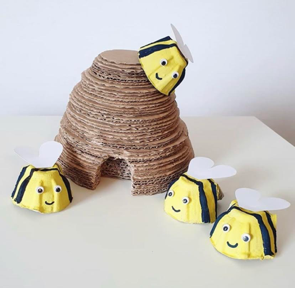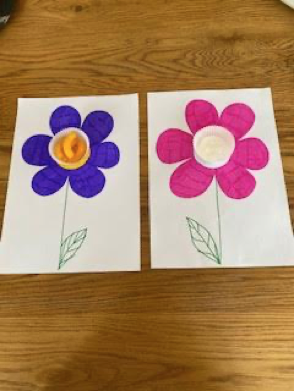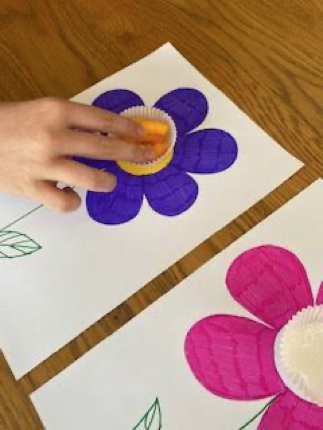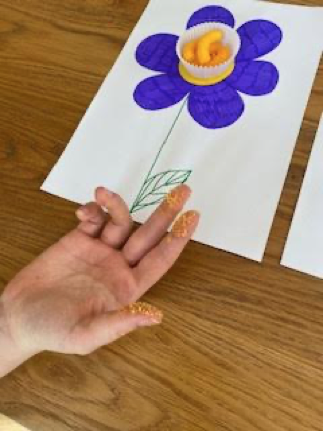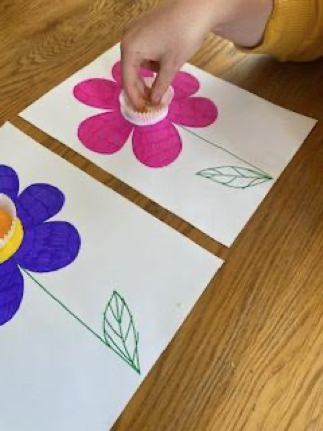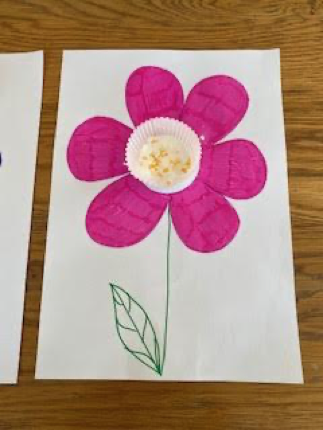
Mount Carmel at Home - 19/05/2020
Posted 2020-05-18 19:02:20Welcome to Mount Carmel at Home. These sessions will enable parents to carry out fun and educational home learning activities with their children. We recommend establishing a routine and setting aside a time in day for home learning. It is preferable to do these activities in the morning when children are more alert than towards the end of the day when they can be tired and less cooperative.
Share your child's learning with us by uploading photos and videos to their Learning Journey on Famly, by uploading on Instagram and adding the hashtag #MountCarmelatHome or posting on our Facebook page. Your child's teachers will love to see what you have been up to!
Click here to download today's activity sheet and resources.
The sound of the week is "L" - https://youtu.be/U2HYM9VXz9k?t=307
Theme: The Countryside
Today’s activities for preschool children
Activity 1 - How many straight sides?
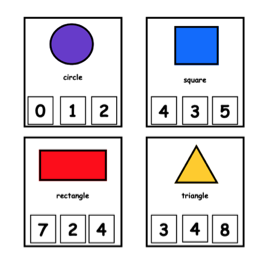
What you’ll need | The ‘How many straight sides?’ print out (or you can make your own!), clothes pegs, card (optional), scissors. |
Method | First, cut out all of the shape cards and present them to your child. You may like to paste them onto some card to make it easier to put the clothes pegs on; but this is not essential. Spend some time talking about the names of each shape before telling your child that you are going to find out how many straight sides each shape has. Choose one to use as an example (not circle!), then ask your child to point to one of the straight sides of the shape. Your child may confuse corners with sides so be sure they understand the difference. Next, ask them to count how many straight sides the shape has and peg a clothes peg to the correct numeral. |
What did we learn? | Mathematics: shape, space and measures – Beginning to use mathematical names for 2D shapes and use mathematical terms to describe shapes, selects a particular named shape. Physical development: moving and handling – uses one handed tools and equipment. |
Activity 2 - Things we see in the countryside
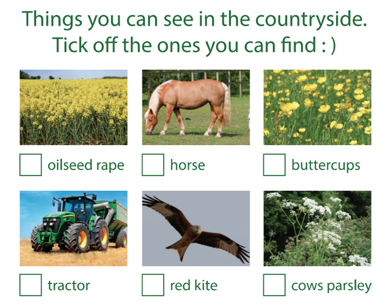
What you’ll need | 'Things you can see in the countryside' tick list, pen or pencil, clipboard or something to lean on |
Method | Now we can have unlimited exercise outside and are allowed to travel in our car to get to our exercise destination now is a great time to get into our countryside and talk about how important it is. We are very lucky living in St Albans as we don't have to travel far to get to some beautiful countryside. Talk to your child about the countryside and ask if they think the countryside is important and why. Ask your child if they can think of any differences between towns/cities and the countryside. Give your child support if needed by asking your child questions, "Where do you see sheep?" "Do you see them in the city?" "Why do sheep need to be in the countryside?" Talk to you child about our food and where it comes from, meat and a lot of our plant based food comes from and is grown in the countryside. So without our countryside it would be difficult to get enough food. On your country walk see if you can spot all of the things on the sheet, ticking them off as you go along. You may need to show your child an example of a tick for them to copy or they could use a cross if it's easier. Point out any rubbish you may see on your walk and ask you child if it belongs in the countryside. Where should the rubbish go? How could this damage the countryside and hurt the animals that live there? |
What did we learn? | Understanding the world (UW) We are starting to comment and ask questions about aspects of our familiar world such as the place where we live or the natural world. We are starting to talk about some of the things we have observed such as plants, animals, natural and found objects. We are learning to care and show concern for living things and the environment. |
Activity 3 - Busy Bees
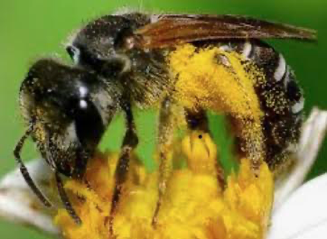
What you’ll need | Egg box, yellow and black paint, white paper for wings, google eyes if you have them or pen to draw eyes and mouth |
Method |
As per the photo, cut out the individual egg cups. Explain to your child we are going to make bees. Ask what colour bees are and ask your child if they can paint the egg cups to make them look like bees. If your child needs support ask them if bees have spots or stripes and you can always show them the photo. Cut out some wings and stick them on. It might be nice to make several bees so the children can play with them. It may also be nice for the children to play with the bees outside so they can fly to the flowers to collect some pollen and nectar to make honey. Talk to your child about bees and ask your child if they know why bees are important. They will probably tell you that bees make honey, which is great. It maybe nice to explain to your child briefly about pollination and that bees play an important role in this process. Simply explain that plants need pollen from other plants to produce seeds and fruit and this is called 'pollination'. A lot of our plant life, including the food that we eat to stay alive and healthy, need bees to spread the pollen from plant to plant and to pollinate them so they can start to grow fruit and seeds that we need to make our food. Does your child know how bees collect and hold the pollen? You can show them the picture of the bee above and explain that bees have very hairy legs which the pollen sticks to. If you wish you can do a simple experiment below to help explain pollination.
Draw two flowers both with different nectar. Here we have used wotsits and icing sugar.
Ask your child to pick up the wotsits to cover their fingers with the orangey crumbs and then move to the other flower and put their fingers in the icing sugar.
They should see some of the orange wotsit crumbs now mixed in with the icing sugar. That flower has now been pollinated! |
What did we learn? | Expressive arts and design (EAD) We are learning to construct with a purpose in mind, using a variety of resources. Understanding the world (UW) We are starting to comment and ask questions about aspects of our familiar world such as the place where we live or the natural world. We are learning to care and show concern for living things and the environment. |
Share
Categories
Recent posts
-
Mount Carmel at Home - 22/05/2020
Posted 18th May, 2020 -
Mount Carmel at Home - 21/05/2020
Posted 18th May, 2020 -
Mount Carmel at Home - 20/05/2020
Posted 18th May, 2020 -
Mount Carmel at Home - 19/05/2020
Posted 18th May, 2020 -
Mount Carmel at Home - 18/05/2020
Posted 17th May, 2020 -
Mount Carmel at Home - 15/05/2020
Posted 15th May, 2020

